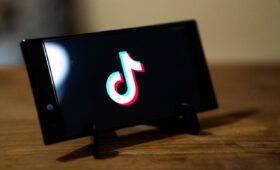Every brand wants attention. But being active everywhere doesn’t guarantee it. Spreading yourself too thin can lead to poor content and low returns. Choosing the right platform is about focus, not volume. Each social media channel has its own audience, style, and pace. What works on one platform might flop on another. A smart brand strategy begins with knowing where your audience is and how they behave. Just because a platform is popular doesn’t mean it’s right for your message. The goal is not just to be seen but to be seen by the right people. According to customer feedback on Buy Real Media, focusing efforts on the most relevant platforms significantly improves reach, engagement, and overall marketing performance.
Know Your Audience First
Before picking a platform, understand who you’re talking to. Your audience’s age, interests, and online behavior guide your decision. If you sell B2B software, you’ll find more value in LinkedIn than Snapchat. If you run a lifestyle brand, Instagram or TikTok may be a better fit. Audience research is essential. Look at where your competitors are active. Analyze where your existing traffic comes from. Check who’s engaging with your content and where. These clues help narrow your focus. Guessing wastes time. Data saves it.
Match Your Content to the Platform
Each platform has its own rhythm and style. Instagram rewards visual storytelling. Twitter thrives on quick, punchy thoughts. LinkedIn prefers professional insights. TikTok loves creativity and humor. YouTube demands longer-form, educational, or entertaining content. It’s not just about where your audience is it’s also about what kind of content you can consistently produce. If you don’t have video resources, TikTok or YouTube might not work yet. If your strength is writing, maybe X or LinkedIn fits better. Match your capabilities to the platform’s native strengths.
Instagram: Visual, Lifestyle, and Product-Driven
Instagram is still a powerhouse for brands with strong visuals. If your product looks good in photos or videos, it can shine here. Stories, Reels, and carousel posts allow you to connect quickly and regularly. Fashion, food, travel, and wellness brands thrive on Instagram. But even B2B companies can use it to humanize their brand. The key is consistency and creative visuals. Strong captions help, but the image is what stops the scroll. Instagram also offers e-commerce tools. If sales are your goal, you can use the platform to drive direct product discovery. It’s a space where you can be polished and personal at the same time.

LinkedIn: B2B and Thought Leadership
LinkedIn is the go-to platform for professionals and B2B brands. It’s less about selling and more about value-sharing. If your brand has expertise to share, this is the place to do it. People use LinkedIn to learn, network, and grow. Sharing useful insights, case studies, and lessons from your industry positions you as an authority. You don’t need to post daily quality over quantity works best here. Engagement comes from being helpful, not promotional. If your goal is to connect with decision-makers or build professional credibility, LinkedIn should be a top choice.
TikTok and YouTube: Video-First and Discovery-Focused
Video content is king, and these two platforms rule in that space. TikTok is fast, fun, and trend-driven. YouTube is longer, more evergreen, and better for deep dives. If your brand can educate, entertain, or inspire through video, both platforms offer real growth potential. TikTok is ideal for creative storytelling and reaching younger audiences. Even serious industries are finding ways to use it through humor, transparency, or behind-the-scenes clips. YouTube, on the other hand, supports in-depth content explainers, tutorials, interviews. Both are powerful tools for visibility. But they require consistent video creation. If that’s not a strength yet, it’s worth planning before diving in. To succeed here, your brand needs to stand out with unique visuals or messaging.
Facebook and X: Broad Reach, But Lower Organic Growth
Facebook still has scale. It’s useful for local reach, community groups, and paid advertising. But organic growth has slowed. It works best when paired with ad spend. If you’re targeting older demographics or want to run targeted ads, Facebook is still relevant. X (formerly Twitter) is more niche now. It favors fast reactions, updates, and conversations. It’s useful for news, tech, and real-time events. If your brand thrives in those spaces, it can be worth the effort. But engagement here demands constant activity and sharp copy. Both platforms require clear purpose. Without one, your content may not gain traction. Evaluate your resources before committing time.
In Conclusion
You don’t need to be on every platform. Choose two or three that match your audience and strengths. Then build a consistent strategy around them. Make sure your content feels native, not repurposed. Audiences notice when something feels off. Start with platforms where you already have a presence or following. Build momentum, measure results, and expand when ready. Keep your messaging clear and your content relevant. Don’t chase every trend focus on what brings value to your audience.




